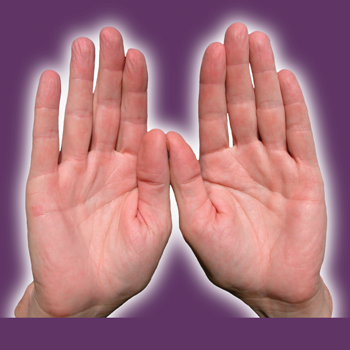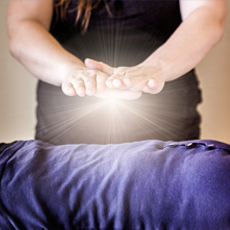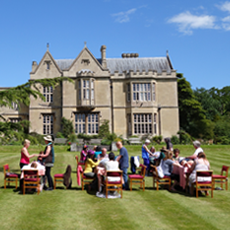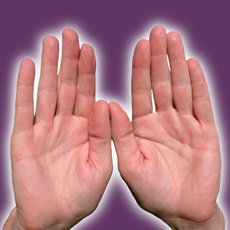by Nicole Mackay
One of the biggest challenges faced by complementary therapists today is the need to bridge the gap between science and “New Age” beliefs. While public perceptions of the benefits of a more holistic approach to health, and to life in general, have shifted significantly in recent years, there is still much to be done to ensure that those who might benefit most have both awareness of, and access to, therapies and services that can be literally life-changing. For those of us already convinced of the potential benefits of alternative remedies and treatments, through personal experiences and those of clients and students, the lack of scientific research to back up, and in particular to explain the efficacy of complementary and alternative medicine, can often be frustrating.
This is perhaps particularly true of Reiki. Like many energy-healing systems, it is a safe, gentle, and effective complementary therapy, which can benefit almost any condition, from emotional stress to chronic pain. Reiki is a noninvasive treatment that can complement existing allopathic treatment, carries no side effects and no contraindications, and appears to reduce stress, help boost the immune system, and stimulate the healing process within the body. The benefits of treatment are often felt immediately, and a weekend training course can provide all the necessary techniques and information for participants to treat themselves, family, and friends. Having worked with Reiki and other energy systems for years, and witnessed the extent of the healing brought about on many levels for so many people, it is my belief that this therapy should be available to everybody.
Proving Reiki to be effective, beneficial, and safe is important and, some feel, necessary if it is to become available to everybody, ideally through mainstream medical and therapeutic channels. In order to accomplish this, we need to employ accepted rigorous scientific methods and move away from the more anecdotal research that relies upon the impression of the patient and/or healer on their progress rather than measurable parameters. A tall order, perhaps, but I and my colleagues have just taken another step towards that possibility.
I first heard about Reiki and energy healing in general when I was training to be a clinical physicist with the North Glasgow National Health Service trust in the UK. I was fairly skeptical when I first heard about it, but after I experienced it and felt it for myself I became convinced of its value as a healing and spiritual tool. I became convinced that something that causes you to feel relaxed, to improve your health (I was suffering from M.E at the time and Reiki helped dramatically) and well-being in such a positive and tangible way must have some physiological effect within the body. I was certain that this couldn’t just be due to a psychological belief.
I came to the conclusion that if there was an actual physiological effect of the energy healing that this would be triggered within the nervous system, and more specifically, the Autonomic Nervous System (ANS). The ANS is concerned with the functions of the body that we cannot control directly, such as respiration, blood pressure, sweating, and vasodilation. It permeates every part and every organ of the body with both sensory and motor pathways, and plays a part in the regulation of our essential functions.
I started to investigate previous research into energy healing to see if anyone else has come up with this link. I discovered that there have been several attempts to study the mechanism of effect in touch therapies such as Reiki; however, most have been anecdotal in approach and few studies have used rigorous scientific methods for the measurement of biological outcomes.
A literature review of previous studies shows an apparent link between Reiki treatment and the ANS. One of the most commonly reported effects of Reiki is that of relaxation or a reduction in stress. The ANS is the motor system for emotion; if Reiki were to ameliorate stress it would therefore also have some effect on the ANS. A paper authored by Ramnarine-Singh (1999) states that the physiologic system sensitive to energy-based therapies is the ANS, as it affects the body’s physiological response to stress, and suggests that physiologically Reiki and Therapeutic Touch (TT)—a therapy similar to Reiki—can be measured by recording blood pressure, pulse, respiratory rate, electroencephalography, electrooculography, galvanic skin response, and hand temperature. Wardell and Engebretson (2001) measured the biological effects of Reiki on the ANS and found significant reduction of anxiety and systolic blood pressure, and a significant increase in salivary immunoglobulin A (IgA) levels, using healthy volunteers for their study. Anxiety was assessed through muscle tension measurement using electromyography as well as monitoring of salivary IgA levels. Vaughan (1995) also investigated the ANS, looking at systolic and diastolic blood pressure, heart rate, and skin response, and found a definite trend towards the lowering of diastolic blood pressure.
Turner et al. (1998) investigated the use of TT for reducing anxiety levels in burn patients, finding a significant reduction in the TT group in comparison with a placebo group. Evanoff and Newton (1999) found that energy-based therapies significantly reduced pain in a randomized control trial of patients with osteoarthritis of the knee. TT/Reiki has also been investigated within the field of cutaneous wound healing. Ramnarine-Singh (1999) highlights the apparent link between energy-based therapies and the ANS, stating that the previous “psychological” research is difficult to interpret because of the subjectivity involved. It calls for new studies measuring physiological responses within the ANS. Studies by Quinn (1984) and Vaughan (1995) support this hypothesis.
At this point I had just finished a rotation period working in the Institute of Neurological Sciences at the Southern General Hospital in Glasgow, a world-class center for research of this type. I contacted my supervisor at the institute to discuss my ideas about energy healing and the ANS and to propose a plan for a research study. He was as curious as I was, and so we began to put together a proposal. It took considerable time, effort, and energy on our part before we were finally given approval to go ahead with the study, which we entitled “An Investigation into the Effect of Reiki on the Autonomic Nervous System.” The aim of our study was to investigate if some indices of autonomic function would show any significant differences between Reiki treatment, a placebo treatment, and a control group. The study was a blind trial with subjects assigned at random into the three groups. Forty-five healthy volunteers were recruited from colleagues and associates, and fifteen subjects were assigned into each group. The study used parameters for which there are reliable, quantitative measures, such as heart rate, cardiac vagal tone, blood pressure, cardiac sensitivity to baroreflex, breathing activity, and hand skin temperature. These parameters are controlled by the cardiovascular and respiratory centers in the brainstem but are modulated by higher functions of the nervous system. The novel aspect of our study was the real-time measurement of brainstem autonomic function by monitoring cardiovascular regulation carried out by the medullary nuclei.
During the study the Reiki group received rest and Reiki treatment, the placebo group received rest and placebo treatment, and the control group only rest. On arrival the subject was positioned on a couch and the electrodes and transducers were attached. Baseline data were recorded during a rest period for fifteen minutes. There then followed a thirty-minute treatment period (Reiki or placebo or rest) followed by another ten-minute rest period.
The Reiki treatment consisted of the placement of the practitioner’s hands over the subject’s body in a series of six hand positions chosen to correspond with key points in traditional energy-healing systems, over clothing, for a thirty-minute period. The hands were placed over the volunteers’ eyes, temples, occiput, chest, knees, and the soles of the feet. The only point at which the practitioner touched the volunteer was to place their hands underneath the head to reach the occiput.
The placebo treatment was carried out by a person with no knowledge of Reiki, who simply mimicked the hand positions of the Reiki practitioner.
Eight physiological parameters were recorded: heart rate, systolic blood pressure, diastolic blood pressure, mean blood pressure, cardiac vagal tone, cardiac sensitivity to baroreflex, skin temperature, and respiration rate. From the statistical analysis of the data we found that there were no significant differences present in the control group; this was as expected. However we did find statistically significant differences between the Reiki and placebo groups, namely changes in heart rate and blood pressure. For those who received Reiki treatment, there was a significant reduction in heart rate and diastolic blood pressure that did not appear in either the placebo or the control group. We have linked the observed reduction in heart rate with the increase in cardiac vagal tone, indicating increased parasympathetic autonomic activity. There was also an observed increase in skin temperature, which could be caused by increased blood flow to the skin, enabled by the reduced vasoconstriction, indicating a reduction in sympathetic activity of the ANS, though the observed change was small. Blood pressure showed a significant reduction in the Reiki group. The blood-pressure reduction can perhaps be explained by the increase in cardiac sensitivity to baroreflex that we witnessed. However, higher centers are able to set the level at which the blood pressure should be defended by the autonomic control system. In the placebo group, the cardiac sensitivity to baroreflex also increased, although to a lesser degree, but with no corresponding blood-pressure reduction. This suggests that perhaps the difference in blood pressure has been caused by higher centers within the nervous system setting a different control level in Reiki but not in placebo.
So what does all this actually mean? Scientifically, we can say that there appear to be significant differences between the Reiki group and placebo and control groups. The nervous system appears to be responding differently to Reiki than to placebo Reiki, which strongly indicates that Reiki has some effect on the autonomic nervous system. We cannot conclusively say that “Reiki works,” as this was a relatively small study, but it certainly does justify further research, such as a larger study either looking in more detail at the ANS and its response to Reiki, or investigating the symptom profile of a disease during and after Reiki treatment. What we can say after completing this study is that the body, and the ANS specifically, responds to Reiki or energy healing and that this response is not purely a psychological effect or wishful thinking on the part of practitioner and/or patient. This scientifically sound conclusion represents a significant step towards bringing energy healing as a whole into the mainstream and, with luck and more hard work, ultimately into general medical practice.
The research cited in this article is published in full in the following scientific peer-reviewed journal: “Autonomic Nervous-System-Changes During Reiki Treatment: A Preliminary Study.” The Journal of Alternative and Complementary Medicine Volume 10, Number 6.
This is one of the articles from the Summer 2005 issue of Reiki News Magazine.
References
Boon, H.; Stewart, M.; Kennard, M.A.; Gray, R.; Sawka, C.; Brown, J.B.; McWilliam, C.; Garvin, A.; Baron, R.A.; Aaron, D.; Haines-Kamka, T. “Use of complementary/alternative medicine by breast cancer survivors in Ontario: prevalence and perceptions.” .J Clin Oncol 18 (2000): 2515–2521.
Evanoff, A.; Newton, W.P. “Therapeutic touch and osteoarthritis of the knee”. J Fam Pract 48 (1999): 11–12.
Halliwill, J.R.; Taylor, J.A.; Eckberg, D.L. “Impaired sympathetic vascular regulation in humans after acute dynamic exercise.” J Physiol 495 (1996): 279–288.
Julu, P.O.O.; Hansen, S.; Al Rawas, S.; Jamal, G.A. “Real-time study of brainstem cardiovascular regulation during systemic excitation of 1-adrenergic receptors in fully conscious human subjects.” J Physiol (Lond) 533P (2001): 76P–77P.
Julu, P.O.O.; Hansen, S.; Barnes, A.; Jamal, G.A. “Continuous measurement of the cardiac component of arterial baroreflex (ccbr) in real-time during isometric exercise in human volunteers.” J Physiol (Lond) 497P (1996): 7P–8P.
Julu, P.O.O. “A linear scale for measuring vagal tone in man.” J Autonom Pharmacol 12 (1992): 109–115.
Kemper, K.J.; Cassileth, B.; Ferris, T. “Holistic Pediatrics: a research agenda.” Pediatrics 103 (1999): 902–909.
Lin, M.C.; Nahin, R.; Gershwin, M.E.; Longhurst, J.C.; Wu, K.K. “State of complementary and alternative medicine in cardiovascular, lung, and blood research: executive summary of a workshop.” Circulation 103 (2001): 2038–2041.
Little, C.J.; Julu, P.O.O.; Hansen, S.; Reid, S.W. “Real-time Measurement of Cardiac Vagal Tone in Conscious Dogs.” Am J Physiol 276 (1999): H758–H765.
Mackay, N.; Hansen, S.; McFarlane, O. “Autonomic Nervous-System-Changes During Reiki Treatment: A Preliminary Study.” J Altern Complement Med Volume 10, Number 6.
Mansour, A.A.; Beuche, M.; Laing, G.; Leis, A.; Nurse, J. “A study to test the effectiveness of placebo Reiki standardization procedures developed for a planned Reiki efficacy study.”. J Altern Complement Med 5 (1999): 153–164.
Martini, F.H. The Autonomic Nervous System: Fundamentals of Anatomy and Physiology. 5th ed. New Jersey: Prentice-Hall, 2001: 503–526.
Orem, J. “The Wakeful Stimulus For Breathing.” In: Isaa, F.G.; Surat, P.M.; Remmers, J.E.; editors. Sleep and Respiration. New York: Wiley-Liss, 1990: 23–31.
Quinn, J. “Therapeutic Touch As Energy Exchange: Testing the Theory.” Adv Nursing Sci 6 (1984): 42–49.
Ramnarine-Singh, S. “The Surgical Significance of Therapeutic Touch.” AORN J 69 (1999): 358–369.
Spyer, K.M. “The central nervous organisation of reflex circulatory control.” In: Loewy, A.D.; Spyer, K.M., editors. Central Regulation of Autonomic Functions. Oxford: Oxford University Press, 1990:168–188.
Turner, J.G.; Clark, A.J.; Gauthier, D.K.; Williams, M. “The Effect of Therapeutic Touch on Pain and Anxiety in Burn Patients.” J Adv Nurs 28 (1998): 10–20.
Vaughan, S. “The Gentle Touch.” J Clin Nurs 4 (1995): 359–368.
Wardell, D.W.; Engebretson, J. “Biological Correlates of Reiki Touchsm Healing.” J Adv Nurs 33 (2001): 439–445.







